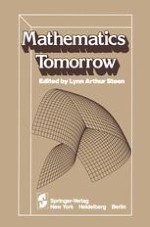Mathematics today is approaching a state of cnSIS. As the demands of science and society for mathematical literacy increase, the percentage of American college students intending to major in mathematics plummets and achievement scores of entering college students continue thelt unremit ting decline. As research in core mathematics reaches unprecedented heights of power and sophistication, the growth of diverse applied special ties threatens to fragment mathematics into distinct and frequently hostile mathematical sciences. These crises in mathematics presage difficulties for science and engineer ing, and alarms are beginning to sound in the scientific and even in the political communities. Citing a trend towards "virtual scientific and techno logical illiteracy" and a "shrinking of our national commitment to excel lence . . . in science, mathematics and technology," a recent study con ducted for the President by the U. S. National Science Foundation and Department of Education warns of serious impending shortcomings in public understanding of science. "Today people in a wide range of non scientific . . . professions must have a greater understanding of technology than at any time in our history. Yet our educational system does not now provide such understanding. " The study goes on to conclude that present trends pose great risk of manpower shortages in the mathematical and engineering sciences. "The pool from which our future scientific and engineering personnel can be drawn is . . . in danger of becoming smaller, even as the need for such personnel is increasing. " It is time to take a serious look at mathematics tomorrow.
